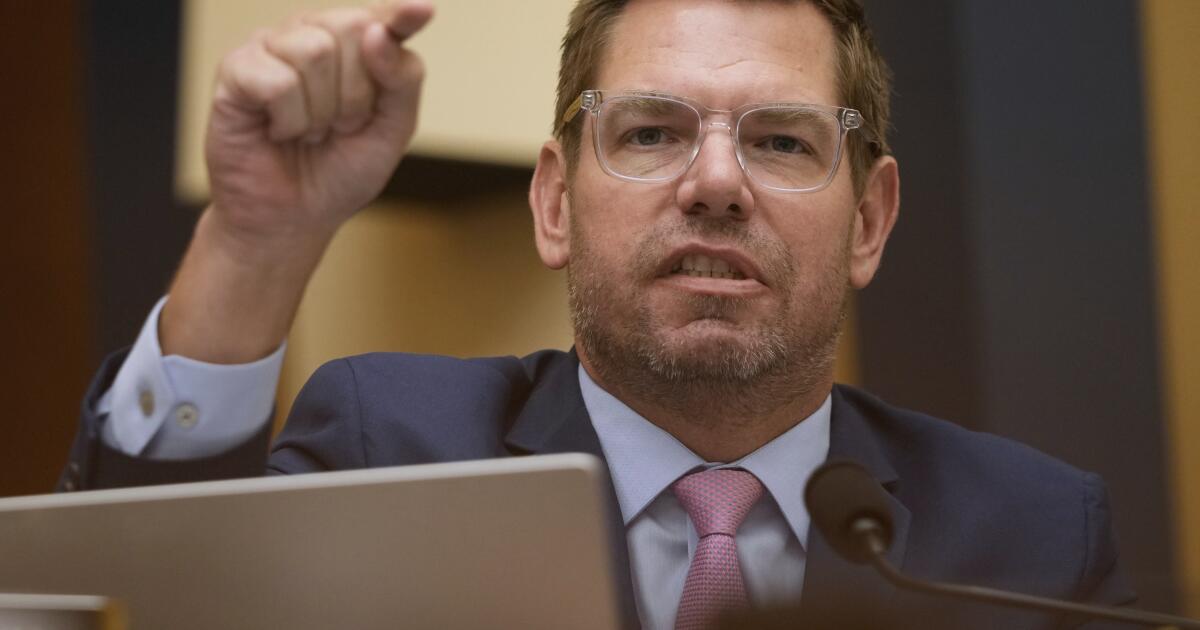Finance
Issuing bonds to tackle Hong Kong deficit not ‘monstrous’: ex-minister Henry Tang

Hong Kong’s plan to issue bonds to tackle a dire deficit is not “monstrous” but rather a legitimate short- to medium-term solution to improve capital flow, former finance minister Henry Tang Ying-yen has said.
Tang on Tuesday defended the government’s plan, which Financial Secretary Paul Chan Mo-po announced in his budget blueprint, after his successor, John Tsang Chun-wah, warned the measure could affect the city’s credit ratings.
According to Chan’s budget speech last week, Hong Kong planned to issue HK$120 billion (US$15.3 billion) in silver, green and infrastructure bonds to cover the government’s recurring expenses. He remained confident that the city would balance the books within three years.
Tsang, the longest-serving financial secretary from 2007 to 2017, earlier said in a social media post that the city needed to look beyond bond issuances to cover government spending. He also argued the government had “undeniably fallen into an era of structural deficit”.
Speaking in Beijing as a member of the Standing Committee of the Chinese People’s Political Consultative Conference (CPPCC), Tang, who was the financial secretary before Tsang, called the plan “completely legitimate” as long as there was market demand.
“Bond issuance for the purpose of maintaining government operations is not monstrous,” Tang said.
“It is acceptable if it is used to strengthen capital flow, and raise funds in the short and medium term when the capital chain is broken.”
Hong Kong’s West Kowloon arts hub funding crisis ‘threatens to halt event deals’
Hong Kong’s West Kowloon arts hub funding crisis ‘threatens to halt event deals’
Hong Kong’s budget deficit is expected to balloon to HK$101.6 billion for the current financial year ending in March, almost double last year’s forecast given by the government. Chan said more borrowing would enable the government to maintain cash flow to finance major projects, such as the Northern Metropolis.
Tang, who served as finance chief from 2003 to 2007, ducked a question on whether Hong Kong had already plunged into a structural deficit as Tsang argued.
But he stressed that Chan had a duty to follow the principle stipulated in the Basic Law, the city’s mini-constitution, that the government needed to avoid deficits and keep expenditure within the limits of revenues.
“If you can be candid to citizens [about the dire financial situation], they can feel your respect and understand the rationale of the measures amid the challenges,” he said, referring to the city’s property downturn and soaring recurring expenditure.
Tang said that back in 2004 when he proposed issuing HK$20 billion in bonds, bankers described it as “a museum piece” as it was a rarely used tool then to solve the deficit problem.
Following measures to lure mainland Chinese tourists and launch renminbi business that year, he posted the city’s first budget surplus in five years in 2005.
Tang argued that Hong Kong was on the right track to revive its economy by finding new engines in technology and deepening cross-border integration.
Tsang’s remarks on the budget measures triggered heated debate on social media. He said that amid the high-interest rate environment, government bonds might not be as attractive to buyers as depositing their money in banks to secure higher rates of return.
30,000 yuan in duty-free? Hong Kong CPPCC members want new cap for mainland visitors
30,000 yuan in duty-free? Hong Kong CPPCC members want new cap for mainland visitors
He also worried that the city would eventually need to pay the debt’s interest expenses, which could affect its credit ratings, as well as saddle future generations with higher taxes and fewer public services.
On Monday, Tang also expressed support for the city’s coming national security legislation, a requirement under Article 23 of the city’s mini-constitution.
“Without stability, it’s hard to talk about economic development and livelihood improvements,” he said.
He added that countries, including Singapore, had been strengthening their own security legislation, urging the proposed law should be utilised effectively to gain investors’ confidence.

Finance
Despite flak for doom-spending their money, Gen Z may be more prepared for retirement than baby boomers, research reveals | Fortune

Gen Z may be known for blowing money on the latest Taylor Swift concerts or luxury trips, but behind the youth’s passion for fancy expenditures is a responsible financial habit: investing for retirement.
In fact, the younger generation may be more prepared to retire than their older cohorts. Nearly half of Gen Z workers (aged 24-28) are projected to maintain their current standard of living in retirement, slightly ahead of the 40% projected for baby boomers (aged 61-65) approaching retirement, according to a new study from investment management firm Vanguard. Millennials were also slightly ahead of the older generation (aged 29-44), with 42% on track for retirement. Gen X fell slightly behind at 41% (aged 45-60).
Vanguard based its findings on data from the 2022 Survey of Consumer Finances, using roughly 2,700 working U.S. households to estimate how each generation was on track for retirement and whether their retirement incomes would be enough to maintain their lifestyle without exceeding their spending needs.
The financial readiness of Gen Z could come as a shock to older generations who may believe they are “doom spending” or making discretionary purchases, rather than necessary ones they’ll need to reach adult milestones. While soaring inflation, high living costs and stagnant salaries are dragging baby boomers out of retirement, young savers may be taking those headwinds as a financial lesson.
Automatic payments and DC plans are helping Gen Z save
Part of the financial preparedness is due to expanded Defined Contribution (DC) plans offered by employers. For younger generations, the plans could make saving easier and more effective through features such as auto-enrollment, automatic escalation, and investing in target-date funds. In addition, a separate Vanguard study found that DC plan participation and eligibility rates are at all-time highs, which could help workers build financial security over time.
What’s more, the study pointed out that if all workers had access to a DC plan—such as 401(k) 403(b)s, about 6 in 10 Americans would be on track for retirement. More than 100 million Americans have access to these plans, holding more than $12 trillion in assets.
But access to retirement funds isn’t universal. A separate analysis found 42% [roughly 40 million] of workers do not have access to these plans, with access gaps concentrated in lower-wage and part-time jobs.
However, despite the younger cohort funneling money into their 401(k)s, the future of any further progress depends on their overall financial wellness. Even with their success in saving, many younger generations are grappling with debt repayments—from student loans, auto loans, and mounting credit card debt.
“Supporting overall financial wellness with effective planning tools is key to helping the next generation achieve lasting retirement security,” said Nicky Zhang, a Vanguard investment strategist and co-author of the research paper.
Baby boomers may hold most of the nation’s wealth but aren’t ready to fully retire
Though Gen Z may be facing debt-repayment struggles, baby boomers, even with holding over half of the nation’s wealth, are not ready to stop the 9-to-5 to retire comfortably. While the wealthiest 30% of boomers are generally on track, others may fall short.
For example, the median boomer is projected to need to replace about a third of their pre-retirement income through private and employer retirement savings, facing a shortfall of roughly $9,000 (or a quarter of their expenses).
To cope, boomers may need to consider options like tapping home equity, reducing spending, or working two additional years, the study found.
Finance
Where to find the cheapest gas stations in Las Vegas

Anyone who drives a car understands the sting of having to fill up their tank and pulling into the gas station, only to discover that gas prices have skyrocketed. Paying extra for gas means you have less to spend on other things, which, over time, can really put a crimp in your budget.
Cheap Insurance explored some of the reasons behind major changes in gas prices, and compiled a list of the cheapest gas stations in Las Vegas using data from Gas Buddy.
Gas prices fluctuate based on several factors, including the cost of the key ingredient, crude oil, as well as the available supply and demand for gasoline. If the price of oil rises, a major refinery goes offline, or more drivers are hitting the road, for example, then the cost will increase.
In the first half of 2022, a unique confluence of events led to a surge in gas prices. The increased demand stemming from the COVID-19 pandemic, Russia’s invasion of Ukraine, and a slowdown in oil production all contributed to a national all-time high of $4.93 per gallon on average in June 2022.
Seasons also affect gas prices. Demand tends to drop in winter, but the cost also falls because gas stations switch to a different blend of gasoline that’s optimal for lower temperatures—and has cheaper ingredients.
Location also matters. The South and Midwest tend to have the lowest gas prices, while the West, including Hawai’i, has the highest. Californians, in particular, pay more for gas on average than any other state. That’s because of its high state excise taxes; its isolation from the country’s major pipelines, which causes supply issues; and its requirements that mandate a more environmentally friendly blend of gas that costs more to produce and adds to the price per gallon.
No matter where you live, read on to see if you can get a deal on gas near you.
#1. Sam’s Club
– Address: 2658 E Craig Rd, North Las Vegas, NV
– Price: $3.04
#2. Costco
– Address: 222 S Martin Luther King Blvd, Las Vegas, NV
– Price: $3.09
#3. Sam’s Club
– Address: 8080 W Tropical Pkwy, Las Vegas, NV
– Price: $3.11
#4. Murphy Express
– Address: 6009 West Craig Rd, Las Vegas, NV
– Price: $3.14
#4. Murphy Express (tie)
– Address: 3742 W. Ann Rd, North Las Vegas, NV
– Price: $3.14
#4. Murphy Express (tie)
– Address: 1970 W Craig Rd, North Las Vegas, NV
– Price: $3.14
#4. Murphy Express (tie)
– Address: 6035 Losee Rd, North Las Vegas, NV
– Price: $3.14
#4. Costco (tie)
– Address: 6555 N Decatur Blvd, Las Vegas, NV
– Price: $3.14
#9. ARCO
– Address: 7212 S Jones Blvd, Las Vegas, NV
– Price: $3.15
#10. VP Racing Fuels
– Address: 4747 N Rancho Dr, Las Vegas, NV
– Price: $3.24
This story was produced by CheapInsurance.com and reviewed and distributed by Stacker.
Finance
Martin Lewis issues state pension warning after Budget
Martin Lewis has issued a key state pension update during his Budget special on Thursday, 27 November.
The state pension will rise by 4.8% in April 2026, meaning that the new state pension will increase to £12,547.60 a year — just below the frozen personal allowance tax threshold at £12,570.
The MoneySavingExpert quizzed Rachel Reeves, putting a question to her from a viewer who asked whether her 85-year-old father living with dementia would have to complete a tax return as his state pension will take him over the personal allowance.
“If you just have a state pension… We are not going to make you fill in a tax return of any type… In this parliament, they won’t have to pay the tax,” the chancellor said.
-

 Science1 week ago
Science1 week agoWashington state resident dies of new H5N5 form of bird flu
-

 Business4 days ago
Business4 days agoStruggling Six Flags names new CEO. What does that mean for Knott’s and Magic Mountain?
-

 New York1 week ago
New York1 week agoDriver Who Killed Mother and Daughters Sentenced to 3 to 9 Years
-

 World1 week ago
World1 week agoUnclear numbers: What we know about Italian military aid to Ukraine
-

 Politics2 days ago
Politics2 days agoRep. Swalwell’s suit alleges abuse of power, adds to scrutiny of Trump official’s mortgage probes
-

 Ohio3 days ago
Ohio3 days agoSnow set to surge across Northeast Ohio, threatening Thanksgiving travel
-

 Northeast1 week ago
Northeast1 week agoCamelot or Cringe?: Meet JFK’s grandson turned congressional candidate for the scrolling generation
-

 Southeast1 week ago
Southeast1 week agoAlabama teacher arrested, fired after alleged beating of son captured on camera





















